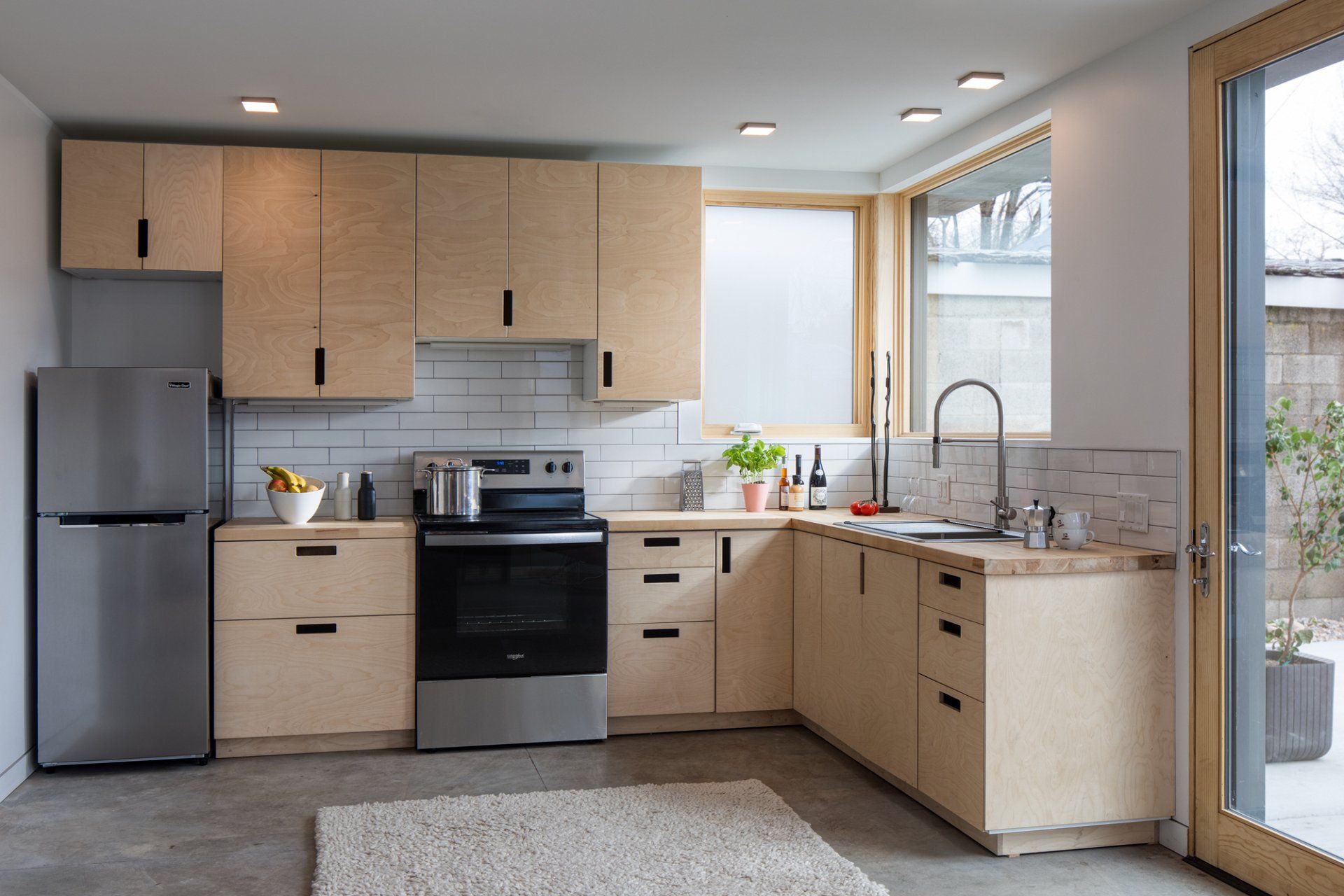The Kunga ADU
The Kunga Family are of Tibetan origin with strong family ties. The proposal for an ADA accessible, Accessory Dwelling Unit ADU is to continue to foster a multi-generational household with growing space needs. The ADU occupant and client suffered a severe car accident, which left her paraplegic. To support the Kunga family, the School of Architecture students are working alongside the Kunga Family to design and build a highly energy-efficient, sustainable and accessible small building to fit the needs of the clients.
Strategy
ADUs were just approved in Salt Lake City in early 2019, and this project is one of the first in the city under this new ordinance. The goal is to design and build an ADU with ample space that is completely ADA accessible and within a very tight budget. According to the city's new guidelines, the project could be no larger than 650 square feet and no taller than 17 feet. In order to maximize the space within these regulations, an upper storage loft was designed to not only provide more space, but also to accommodate a more open feel for the connected living space below. The main area is visually connected to the yard and main home as this will be the residence for a member of the family who still wants connection with those living in the main home. This ADU is comprised of a full kitchen, living room, bathroom, bedroom, and upper loft storage area. This project allows the family to stay in the current home despite the growing need for space.
Resilience and Sustainability
Although a minimal budget project, every measure possible is being taken to provide as much sustainability, thermal comfort and resilience as possible within the project. Operable windows are abundant in each space, allowing natural ventilation to cross through the entire home. A south-facing front facade with large corner-wrapping windows provides natural daylight into the main living areas and into the upper storage loft. Metal sun blades block out the unwanted heat gain during the hot summer months, while still allowing to utilize winter solar heat gain to heat the space. Other strategies include but are not limited to:
- Implementation of Passive House design principles and strategies for insulation values, air tightness and passive solar heating/lighting
- Specification of energy-saving appliances (Energy Star or better), low-U-value windows and efficient, easily-maintained HVAC systems (radiant heating and mini-split heating/cooling)
- Utilization of super-insulated, air-tight construction techniques
- Highly-insulated, shallow, thickened-edge, concrete slab-on-grade construction
- Specification of low/no-VOC (Volatile Organic Compound) materials and finishes
- Optimization of building design for simplified/minimal footprint and solar shading
- Energy-modeling analysis of overall building systems and design using Sefaira software
- Opportunities for on-site water collection and storage
Project Blackboard
Design: Summer 2019
Construction: Fall 2019 to Spring 2020
Individual Building size: approx. 650 SF
Individual Lot size: 7,280 SF
Direct construction cost goal: $110,000 max.
Designed as close to Passive House Standard as budget allows
Summer 2019 Architecture, Design, Energy Performance Simulation and Fall 2019 Construction Student Team:
Aant Esmaeil, Blake Larson, Blake Nelson, Brayden Weir, Cecilia Rothert, Chase Gubler, Chris Voss, Tim Hulse, Yuna Semenova
Spring 2020 Construction Student Team:
Aant Esmaeil, Blake Nelson, Brayden Weir, Chase Gubler, Chris Voss, Tim Hulse, Yuna Semenova
Architectural and Program Support: Assist
Community Design Center Salt Lake City, Jason Wheeler, Nicole Zinnanti
Structural and Consultation: Sarah Winkler
Studio and Construction Instructor: Jörg Rügemer
Construction Instructor:
Colby Kalian
Client: The Kunga Family, Salt Lake City
Photo credits: Student and Instructor Team, Paul Richer Photography





